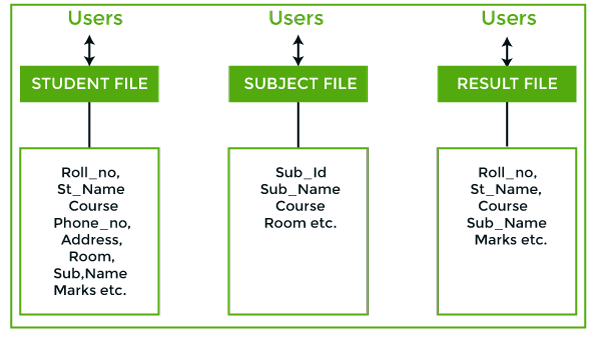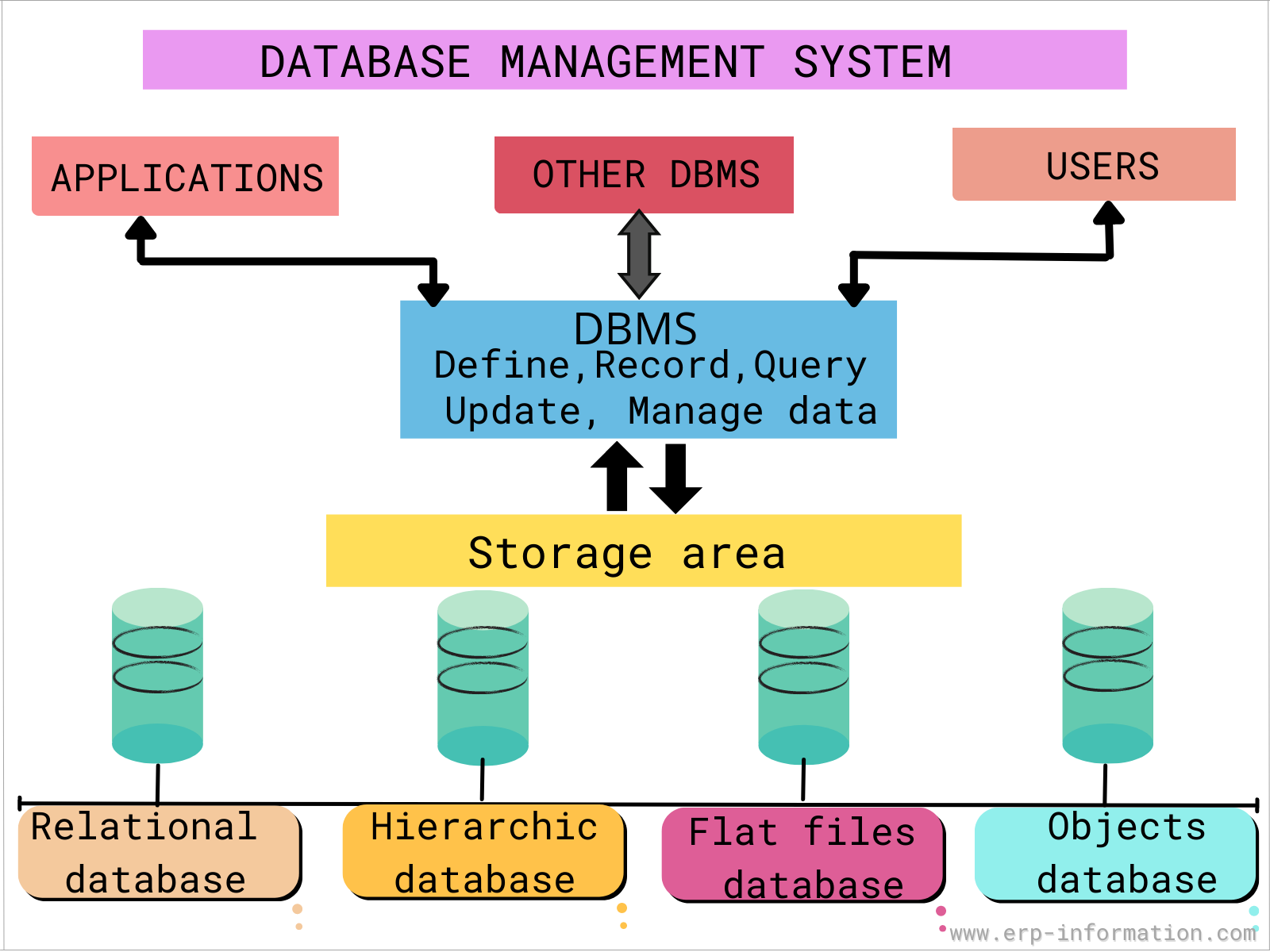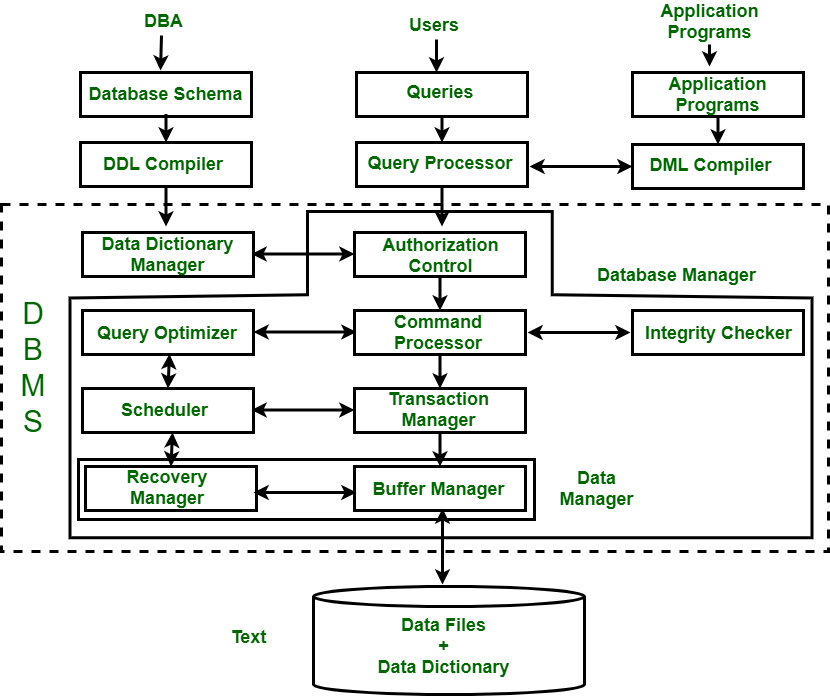Explain Different File System of Database Management System
Any transactions done in the file based system should not alter the consistency property. A database file system is more like a high-level application to help you organize and access your files more easily and more efficiently.

Dbms Vs Files System Javatpoint
Database Management System DBMS is a software that allows access to data stored in a database and provides an easy and effective method of Defining the information.

. 9 Disadvantages of Database management system. The data stored in the file based system should remain consistent. In Computer Science File Processing System FPS is a way of storing retrieving and manipulating data which is present in various files.
The database management system has to support ACID atomicity consistency isolation durability properties. Program-data independence provides a big relief to database users. There are several types of database management systems.
File system does not allow sharing of data or we can say sharing is too complex in file system. Below is a list of components within the database and its environment. The Database management system allows so many users to access databases at the same time.
Backup and recovery are the two main methods which allow users. It contains flat files that have no relation to other files when only one table is stored in. Tha main Four Types of Database Management System are.
Files are used to store various documents. The file names are very related to each other and arranged properly to easily access the files. It is also called a traditional based approach in which a decentralized approach was taken where each department stored and controlled its own data with the help of a data processing specialist.
Protecting the information from system crashes or data theft. Types of Database Management Systems. Insulation Between Data and Program.
File System File System Approach. Differentiating access permissions for different users. When the data stored in the form of records and is connected to each other through links is.
File based systems were an early attempt to computerize the manual system. Data is Stored Hierarchically top down or bottom up format. Data searching For every search operation performed on a file system a different application program has to be written.
Redundant data can be present in a file system. In a File System data is directly stored in set of files. In a Hierarchical database model data is organized in a tree-like structure.
It is a collection of programs used for managing data and simultaneously it supports different types of users to create manage retrieve update and store information. The functionalities of a File-based Data Management System are as follows. All the information in database management system occurs only once so chances of duplicity are very less.
When the details of multiple members can be linked to the files of multiple owners and vice versa it is called a network database. DBMS is software for managing the database. The file based system should not allow any illegal or potentially.
All files are grouped based on their categories. Whereas in DBMS data can be shared easily due to a centralized system. Those database systems which execute on different operating systems under different application procedures and carries different hardware devices.
For instance MP3 files can be listed by artist genre release year and album - at the same time. A file based system helps in basic data management for any user. In addition the flat file based system is also available in formats that can be read by humans and in the binary formats as well.
It doesnt provide backup and recovery of data if it is lost. Saves Storage Space and Cost. Also known as flat models flat file based database management system is one of the simplest systems present in the market.
Data is represented using a parent-child. This includes the DBMS software itself the Operating System the network software. In DBMS there is no redundant data.
As in database management system data files are shared that in turns minimizes data duplication and redundancy. This is the set of programs used to control and manage the overall database. A database management system is able to store any kind of data in a database.
Popular Examples of Database Management System. File System DBMS. The database file system is a faceted system which groups files based on various attributes and dimensions.
Flat file based database management systems. The Database Management System DBMS is defined as a software system that allows the user to define create and maintain the database and provide control access to the data. Here is a list of seven common database management systems.
DBMS have several components each performing very significant tasks in the database management system environment. In traditional file management system structure of data files was defined in the application programs so the user had to change all the programs that are using that particular data. The file system is software that manages and organizes the files in a storage medium within a computer.
Those database systems which execute on the same operating system and use the same application process and carry the same hardware devices. A File Management system is a DBMS that allows access to single files or tables at a time.
Difference Between File System And Dbms In Tabular Form Pediaa Com


0 Response to "Explain Different File System of Database Management System"
Post a Comment